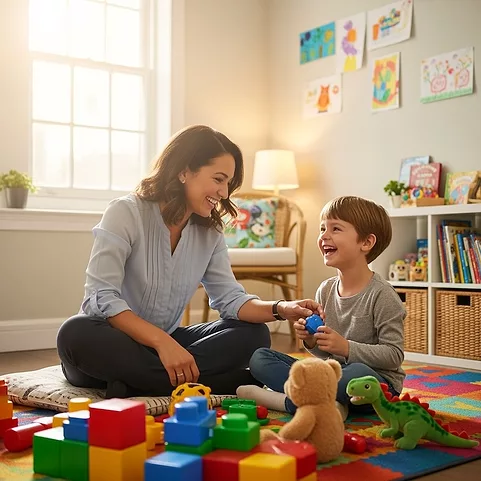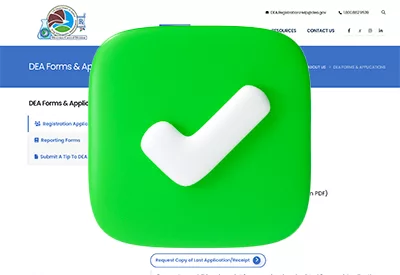Home » Diagnostic Comorbidity in DSM-5: More of the Same
Diagnostic Comorbidity in DSM-5: More of the Same
August 1, 2013
From The Carlat Child Psychiatry Report
David A. Frenz, MD
The epidemic of psychiatric comorbidity has been a problem since DSM-III appeared way back in 1980. Not much has been done to improve this area in the subsequent editions of the manual. Nonetheless, in this article we’ll explore psychiatric comorbidity in DSM-5: its origins, current status, and potential solutions for the next go-around.
Comorbidity is the concept that individuals can have more than one distinct disease. Shortly after epidemiologist Alvan Feinstein began exploring the concept of comorbidity in internal medicine in the 70s, the idea found fertile ground in psychiatry. Some authorities, however, think the jump from general medicine to psychiatry was a huge mistake. Scott Lilienfeld and collaborators stated that “the application of the term and concept of comorbidity to psychopathological syndromes is almost invariably misleading and arguably has led to more confusion than clarification” (Lilienfield SO et al, Clin Psychol Sci Pract 1994;1(1):71–83).
Prevalence
Prevalence data concerning mental illness and comorbidity come from the National Comorbidity Survey (NCS), a study that begin in 1990. Household surveys of representative samples of the US population have been conducted at intervals using structured clinical interviews and reported over the years.
The first wave of data demonstrated a 48% lifetime prevalence of mental illness with a roughly equal rate for both men and women (Kessler RC et al, Arch Gen Psychiatry 1994;51(1);8–19). The corresponding 12-month prevalence was about 30%. Major Depressive Disorder (MDD) was most common (17% lifetime prevalence), followed by social phobia (13%) and alcohol dependence (14%).
A second round of the study found that of patients with any mental disorder, 21% had just one diagnosis, 13% had two diagnoses and 14% had three or more diagnoses on a lifetime basis. The 12-month prevalence rates were in the same ballpark. A replication survey was conducted starting in 2001 and found similar numbers (Kessler RC et al, Arch Gen Psychiatry 2005;62(6):593–602; Kessler RC et al, Arch Gen Psychiatry 2005;62(6):617–627).
These data likely underestimated the true prevalence of mental illness. People who were homeless and institutionalized were excluded from the study, and primary psychotic disorders and most personality disorders were not assessed.
Causes of the Controversy
A moment of sober reflection raises a question: Our patients are ill, to be sure, but can they really be that ill? We know patients can have tremendous symptom burdens, which would lead one to say, “Yes.” But do they have multiple illnesses? Perhaps not.
Michael First, editor of DSM-IV, observed “in psychiatry, cases of true comorbidity are relatively rare since, for most disorders, we do not know enough about the underlying pathophysiology to be able to determine whether the disorders are truly clinically distinct” (First MB, Psychopathology 2005(4);38:206–210).
Other authors have offered various explanations for apparent comorbidity (Dell’Osso L and Pini S, Clin Pract Epidemiol Ment Health 2012;8:180–184). The primary causes are artifacts of DSM’s categorical structure involving hundreds of criteria sets. For example, patients with MDD often meet criteria for generalized anxiety disorder (GAD). When one parses symptoms, however, dysregulated sleep, fatigue, and cognitive problems are common to both criteria sets. Instead of two mental disorders, maybe we are really dealing with just one underlying illness with various manifestations.
Dimensional Solutions
Various DSM luminaries have pointed out that psychiatry wasn’t always so confused (Pincus HA et al, World Psychiatry 2004;3(1):18–23). Previously, clinicians were more parsimonious and employed a “one disease, one diagnosis” model to describe patient presentations. This lumping was achieved through the use of various “qualifying phrases” to capture all of the texture.
A dimensional approach to diagnosis, which is a sophisticated throwback to this earlier era, has been proposed as a possible solution to artifactual comorbidity (Goldberg D, Br J Psychiatry Suppl 1996;30:44). This involves looking carefully at the connections between various mental disorders that seem to be closely related, such as affective and anxious symptoms. Other dimensional solutions view symptoms on a continuum—for example, the degree or severity of anhedonia—rather than the current yes/no criteria involving clinical thresholds (eg, “most of the day, nearly every day”).
There is considerable empirical support for lumping mental disorders together. Robert Krueger, using NCS data, derived a three-factor model that organizes mental disorders into broad themes or patterns: internalizing problems and externalizing problems (Krueger RF, Arch Gen Psychiatry 1999;56(10):921–926). The former is further divided into two groups: anxious-misery and fear.
Using this approach, DSM categories cluster together. MDD, dysthymic disorder, and GAD become related forms of anxious-misery; panic disorder, agoraphobia, and various phobias represent fear; and addiction and antisocial personality disorder are lumped into externalizing problems.
DSM-5 strongly considered some dimensional solutions. One involved mixed anxiety/depression (MAD), which is already recognized by the World Health Organization’s International Classification of Diseases and was buried at the back of DSM-IV-TR for further study. Ultimately,however, MAD was torpedoed and does not appear in DSM-5.
Another dimensional solution involved completely retooling personality disorders (PDs). Some of this was driven by studies that demonstrated that patients often meet criteria for multiple PDs (Torgersen S et al, Arch Gen Psychiatry 2001;58(6):590–596), which is a little hard to wrap your mind around using categorical constructs.
The model that DSM-5 floated involved two components: personality functioning and pathological personality traits (Diagnostic and Statistical Manual of Mental Disorders, 5th Edition. Arlington, VA: American Psychiatric Association, 2013, p. 761–781).
Personality functioning was further divided into an assessment of identity, self-direction, empathy and intimacy, all of which were rated on scales from 0 (little or no impairment) to 4 (extreme impairment). Patients with at least moderate impairment in personality functioning were diagnosed with a personality disorder if they also had pathological personality traits.
Like MAD, this proposal didn’t make the final cut. It has, however, been retained toward the back of DSM-5 as an “alternative model” that might be ready for prime time in the future.
CCPR's Verdict: DSM-5 does little to resolve our issues with diagnostic comorbidity. It remains narrowly categorical and took a pass on some attempts at dimensional constructs. But that doesn’t mean we should limit ourselves. Get creative and start adding some texture to your diagnoses (eg, generalized anxiety disorder, moderate, improved). This will better describe the nuances of each patient and improve communication with other clinicians. Plus, just because the DSM categories don’t fit our patients, doesn’t mean we have to use just those. Dust off the descriptors and dimensions. We don’t have to limit our formulations to insurance reimbursed diagnostic coding for anything other than the bill.
Issue Date: August 1, 2013
Table Of Contents
Recommended
Newsletters
Please see our Terms and Conditions, Privacy Policy, Subscription Agreement, Use of Cookies, and Hardware/Software Requirements to view our website.
© 2025 Carlat Publishing, LLC and Affiliates, All Rights Reserved.


_-The-Breakthrough-Antipsychotic-That-Could-Change-Everything.webp?t=1729528747)



